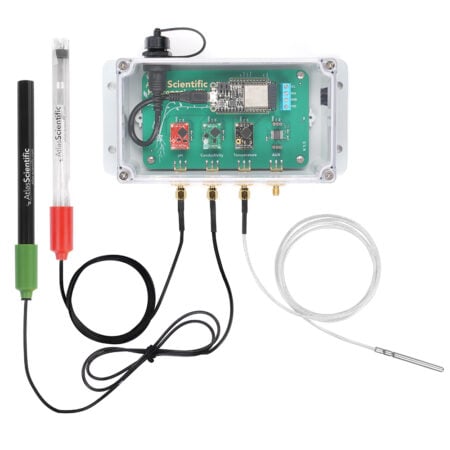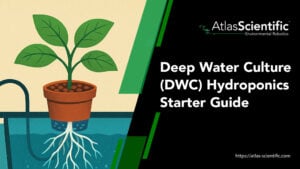The two main factors between groundwater and surface water are where the sources originate from and the difference in water quality. Groundwater comes from beneath the Earth’s surface, whereas surface water is found on top of the Earth’s crust in lakes, rivers, and so on. As surface water is exposed, it is more likely to contain contaminants than groundwater, however, that is not always the case, which we will explain in this article.
Water is an essential element for all living things, and it is something we cannot survive without. Water is found on Earth from two sources: groundwater and surface water.
Surface water is as it sounds, it is any freshwater that is found in streams, lakes, and wetlands (any body of water on the Earth’s surface), whereas groundwater is found in aquifers underground, which can be extracted using a water well or motor. Groundwater originates when rainfall and snow/ice travel through the soil and into cavities and fractures within the Earth’s bedrock.
Even though surface water is very useful for various applications, it is, in fact, groundwater where the majority of our drinking water comes from. To understand why, and the other ways that groundwater and surface water can be used, it is important to understand what differentiates the two water sources.
What Is The Difference Between Groundwater & Surface Water?
The main differences between groundwater and surface water is the origin of the water source and the difference in water quality.
Wherever you are on Earth, somewhere beneath your feet, there is always water. Groundwater comes from saturated zones of rock and soil, known as aquifers beneath the Earth’s surface, which can be accessed by digging wells or using motors. Surface water is much more accessible as it is readily available on land in rivers, oceans, lakes, and ponds.
Because surface water is more exposed to human activity, the water can easily pick up chemical pollutants via runoff, air fallout, and other sources that carry contaminants. This is why extensive treatment, such as water purification methods, must be carried out, to make the water suitable for human use.
Even though groundwater is usually cleaner than surface water, groundwater systems are also connected to surface water, and consequently, contaminants can also find their way into aquifers from seepage and soil percolation.
However, as groundwater travels through rock and sediment layers, most contaminants can be filtered out. Therefore, groundwater usually contains fewer chemical pollutants and other contaminants than surface water, requiring less treatment to improve the quality of water before it is used as drinking water.
Groundwater is the main source of drinking water supplies, however, it is not always easy to access water found in groundwater systems. Most freshwater, that is groundwater, is found very deep underground, so expensive and advanced pumps are required to extract the water.
Despite this, groundwater is often preferred over surface water because it is also more obtainable during a drought. During a drought, surface water can easily dry up, causing issues for industries that solely rely on surface water as a primary water supply. Although surface water is easier to access, groundwater can easily be extracted using wells when water is needed.
Granted that groundwater is widely used in drinking water supplies, it is also important in other applications. Groundwater can be used for aquaculture, mining, livestock, and in high-energy-efficient HVAC systems.
Even though groundwater has many benefits, there are also some downsides that you should know about. When the population size of an area increases, so does the amount of pollution, which puts strain on groundwater systems. It also takes longer for groundwater aquifers to fill back up after they have been accessed compared to surface water sources.
Why Is Groundwater More Difficult To Clean Than Surface Water
Even though groundwater is usually cleaner than surface water, groundwater systems can be more challenging to clean than surface water. As groundwater flows beneath the surfaceare also connected to surface water, and consequently, therefore, contaminants can also find their way into aquifers from seepage and soil percolation. many contaminants attach to the surrounding sediments, making aquifer restoration challenging. Depending on the extent of contamination, the process can take years, decades, centuries, or even millennia.
How To Assess Groundwater Quality?
To assess groundwater quality, a sample must be collected and analyzed for various physical, chemical, and biological parameters. These include measuring pH levels, conductivity, dissolved oxygen, total dissolved solids (TDS), and specific ions such as calcium, magnesium, nitrate, and chloride. Testing also detects heavy metals like lead and arsenic, bacteria levels, and, in some cases, pesticides or other contaminants. This process is typically conducted in a laboratory using specialized equipment and analytical techniques to ensure accurate results.
Testing and measuring water quality tells us if groundwater or surface water contains pollutants and contaminants. Testing water quality is one of the most important ways to combat water pollution, protect aquatic environments and ensure that the quality of water meets drinking water standards. For example, a hydroponics kit would cover most of your water testing needs.
How Does Groundwater Become Contaminated?
We know that groundwater generally contains fewer contaminants than surface water, yet, there are still many ways that groundwater can become polluted that you should be aware of before you treat the water.
The main way groundwater becomes contaminated is through leaching or discharge from the land above, however, groundwater can still contain contaminants even if there are no pollution sources nearby. Therefore, it is essential to test water that will be used for drinking water, as even the smallest amount of contaminants can make people sick.
Pollution in groundwater can be separated into two sources: point and non-point sources.
Point Sources:
Point source pollution is localized and easily identifiable. This type of pollution includes landfills, underground gas/oil tanks, septic tanks, industrial sources, and accidental spills.
Non-Point Sources:
Non-point sources include nutrient run-off such as pesticides that can enter the sediment and soil from agricultural operations.
How To Prevent Groundwater Contamination?
There are many ways you can reduce groundwater pollution, both at home and in the workplace. Key strategies to prevent groundwater contamination include:
At Home:
- Dispose of all water correctly and never dump chemicals down your drains.
- Test any oil tanks for leaks.
- If you have a septic tank, have it inspected at least every five years.
- If you get your water from a well, check the area has no pollution risks.
- Store any chemicals and fuels properly.
At Work:
- Dispose of any waste correctly.
- Safely store and handle hazardous chemicals and fuels properly.
- Maintain any on-site oil/septic tanks.
- Check all wastewater drainage connections are still functioning, and no corrosion could leak waste into the environment.
- In stormwater operations, keep chemicals and waste products away from the rain that may run off into groundwater or surface water sources.
What Is The Most Common Groundwater Contaminant?
As groundwater moves through the soil, it can dissolve metals like iron and manganese, potentially leading to high concentrations in the water. Additionally, pesticides and fertilizers used on lawns and crops can build up over time and seep into the water table.
Minerals In Water
Water from your household taps contains added minerals such as calcium, magnesium, and potassium. The amount of minerals in your water depends on how hard the water is.
Water hardness tells us the amount of dissolved calcium and magnesium in the water. Hard water contains more minerals than soft water (small or no minerals), and therefore, the minerals can corrode pipes or restrict water flow systems. Water hardness is a good indication of how clean the water is, which is why it is an essential measurement for many industries.
Whether water comes from groundwater or surface water, the water hardness should be measured. The United States Geological Survey has separated water into four categories, measured in milligrams per liter (mg/L):
- Soft Water: 0-60 mg/L
- Moderately Hard Water: 61-120 mg/L
- Hard Water: 121-180 mg/L
- Very Hard Water: >180 mg/L
It is also important to note that some industries (like the water softening indutry) measure water hardness by grains per gallon (gpg). When using this measurement, the hardness of water is divided into five categories:
- Soft Water: 0.0-1.0 gpg
- Slightly Hard Water: 1.1-3.5 gpg
- Moderately Hard Water: 3.6-7.0 gpg
- Hard Water: 7.1-10.5 gpg
- Extremely Hard w=Water: >10.5 gpg
Summary
Groundwater and surface water are used for numerous applications. Even though surface water is more easily accessible than groundwater, groundwater is the main source of water for drinking water supplies because it generally contains fewer contaminants.
Despite lower contaminants, groundwater must still be measured and treated before use to remove any contaminants and purify the water if needed.
If you have any questions regarding groundwater, surface water, water quality, or what water testing kits we have to offer, do not hesitate to contact our world-class team at Atlas Scientific.
Environmental Monitoring Kits

















